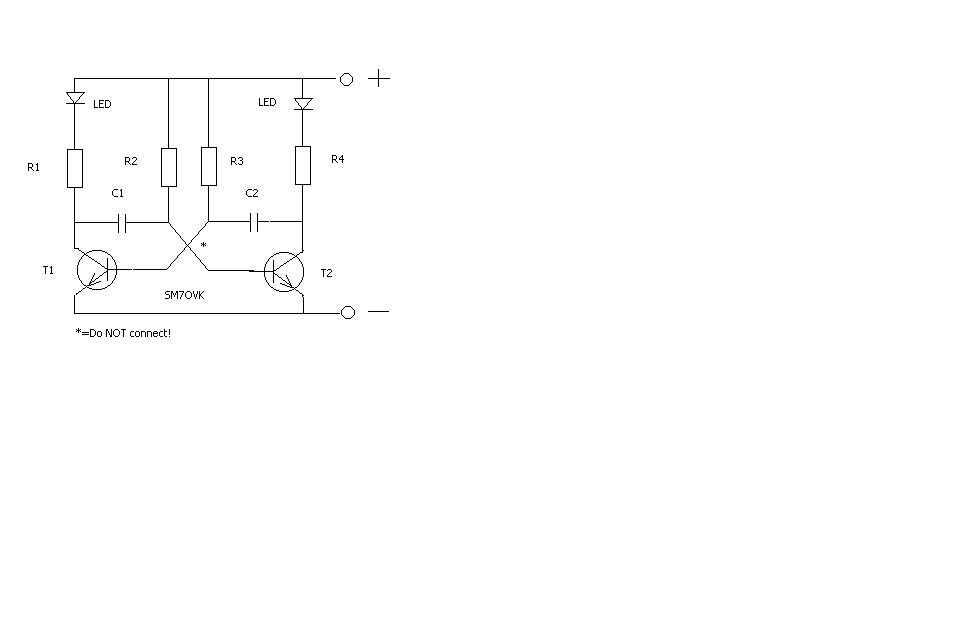

Foreword
It all began the other evening when my oldest son asked if he couldn’t try to solder? He had never tried before – but let’s give it a try! Only some days earlier we were down at a ham-fleamarket and we had a lot of old capacitors left. These where perfect for his first soldering tests! After some of the capacitors were soldered together he did asked for more, can’t we “develop” something… I went trough some old books and we first tried this;
First project, a simple “flip-flop”
You will need two transistors, two capacitors, two LEDs and four resistors. We soldered all together “hanging in the air”, or dead bug style, see picture.
The unit is powered with 6V. We have used old and quite big components and in this way it’s much more easy to handle for a beginner. (It’s also no big deal if to much heat is used…)
Schematic is found here and the components list;
- R1=150ohm (brown, green, brown)
- R2=2200ohm=2K2 (red, red, red)
- R3=2200ohm=2K2
- R4=150ohm
- C1=220uF
- C2=220uF
- T1=Any NPN transistor
- T2=Any NPN transistor
- LED=any LED
Important notes
Any transistor, as long as it’s a NPN type. The “arrow pin” is the Emitter often marked E. The opposite pin is the Collector marked C and the mid pin, the Base marked B. It’s important to get all the pins of the transistors right!
The LED must be in the right way, if you don’t know – test, they will not blow. If they don’t lit change the direction, you can test this by first soldering R1 and R4 together with the LEDs and test them with the battery. R1 and R4 must be increased if higher supply voltage should be used. 150ohm will drive nearly 30mA through the diodes, this is high but I’m quite sure that the juniors all agree – it must really light to be interesting…
The resistor colours are in the component list. If you haven't got components in your “junkbox” you can always find them at Radioshack or Mouser. In Sweden a good company with many things to choose from is Elfa and I'm sure you'll find similar companies in other contries.
All material on these pages is used on Your own risk. The soldering iron is VERY hot!